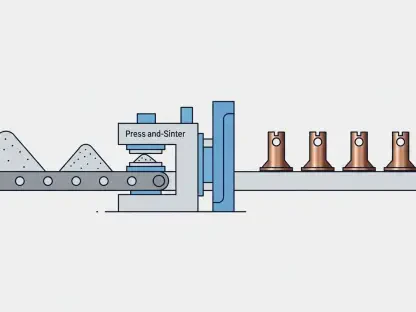Setting the Stage: Tariffs as a Game-Changer for Honda
In the intricate dance of global trade, few moves have been as disruptive as the recent U.S. tariffs on vehicle imports, which have carved a significant dent into Honda Motor Co.’s financial stability. For the April-June quarter, the Japanese automaker saw its profits nearly halved, a direct blow from a 25% tariff on exports to the United States, costing an estimated 450 billion yen ($3 billion). This staggering figure not only highlights the immediate financial strain but also raises broader questions about how multinational corporations can navigate an era of escalating trade barriers. This analysis aims to dissect the market trends shaping Honda’s performance, evaluate the data behind the downturn, and project potential pathways forward in a landscape where policy shifts hold as much power as consumer demand.
Market Trends and Data Analysis: Unraveling Honda’s Financial Landscape
Tariff Turbulence: Quantifying the Profit Plunge
The financial ripple effects of U.S. tariffs on Honda are starkly evident in the latest quarterly results. Profits for the April-June period plummeted to 196.7 billion yen ($1.3 billion), a sharp decline from the 394.7 billion yen recorded in the same quarter last year. Quarterly sales also dipped by 1.2% to 5.3 trillion yen ($36 billion), while global auto sales fell to 839,000 units from 869,000, with notable drops in Japan, other Asian regions, and Europe. These numbers underscore the harsh reality of absorbing tariff costs, forcing Honda into a delicate balancing act between maintaining competitive pricing and safeguarding margins in a highly contested market.
Regional Dynamics: Bright Spots Amidst Gloom
Despite the overarching financial challenges, Honda’s performance reveals a patchwork of regional outcomes that offer some respite. North America stands out as a stronghold, with robust auto sales providing a buffer against losses elsewhere. Similarly, the motorcycle segment shows strength in markets like Brazil and Vietnam, highlighting the value of diversified operations. However, this reliance on specific regions poses risks, as any localized economic downturn or policy change could amplify vulnerabilities. In comparison to peers facing similar tariff pressures, Honda’s mixed portfolio provides a cushion, though the sustainability of this approach remains under scrutiny as trade tensions persist.
Beyond Tariffs: Electric Vehicle Costs and Market Shifts
Adding complexity to Honda’s financial narrative are pressures beyond tariffs, notably in the realm of electric vehicles (EVs). A significant one-time expense related to EVs, including losses on units sold in the U.S. and write-offs from lineup adjustments, has further strained the balance sheet. This reflects a broader industry pivot toward electrification, where varying regional regulations and consumer adoption rates create additional hurdles. A recent U.S.-Japan agreement to lower the tariff to 15% offers a glimmer of hope, potentially easing some cost burdens, but the interplay of EV investments and global trade policies continues to shape a multifaceted challenge for the automaker.
Future Projections: Navigating the New Normal of Trade Barriers
Looking ahead, Honda must brace for a landscape where trade barriers are increasingly seen as a persistent reality. The company’s upward revision of its full-year profit forecast to 420 billion yen ($2.9 billion), despite a 50% drop from last year’s figures, signals cautious optimism. Emerging trends, such as potential further tariff negotiations or shifts in U.S. policy, could alter the trajectory, while investments in local production might mitigate import costs over time. Technological advancements in EVs and hybrids also position Honda to adapt, though high upfront costs for such transitions remain a concern. Industry projections suggest that automakers may need to accelerate localization strategies between 2025 and 2027 to bypass trade obstacles effectively.
Reflecting on Honda’s Path: Strategic Lessons from a Tariff-Hit Quarter
Looking back, the analysis of Honda’s financial struggles under U.S. tariffs reveals a critical intersection of policy and profitability, with a profit drop to nearly half of last year’s figures and regional disparities painting a complex picture. The data points to both immediate setbacks and areas of resilience, such as North American auto sales and motorcycle market strength. For stakeholders, the past quarter serves as a stark reminder of trade policy’s outsized influence on global operations. Moving forward, strategic localization of production emerges as a viable step to reduce tariff exposure, alongside deeper investments in emerging technologies like EVs. Diversifying market reliance and closely monitoring geopolitical developments also stand out as essential tactics to build resilience against future trade disruptions.









